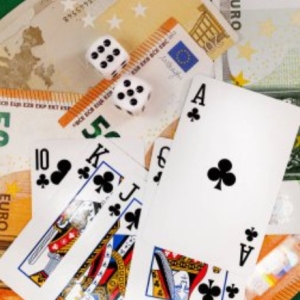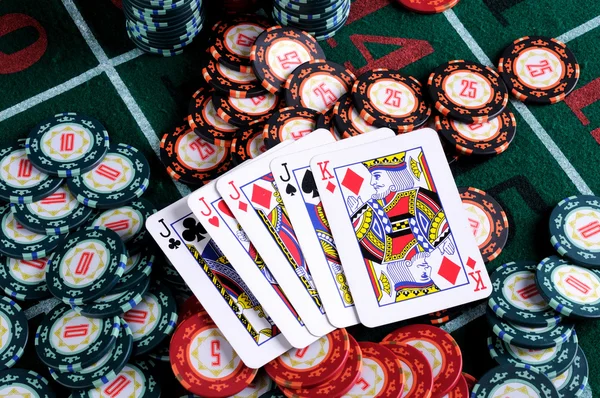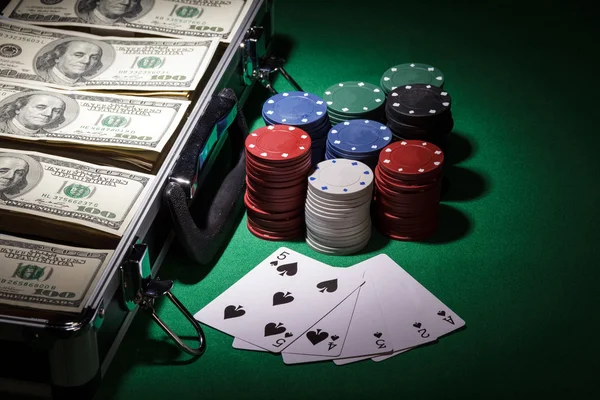How Long Does It Take to Learn PokerPosted by Matthew King on December 15th, 2023  How Long Does It Take to Learn Poker?
A very common question that my subscribers often ask me is "how long does it take to learn poker from scratch?" And it's a reasonable question, because if your goal in poker is to start making money (like most people), then of course you want to know when the profits will start coming in. Well, unfortunately, as is often the case in poker, there is no absolutely clear and exhaustive answer to this question. The answer will be different for each individual. Some people learn and grasp the material faster, some are more naturally inclined to take risks, and therefore start venturing into higher limits sooner. Some are more hardworking and diligent than others, and therefore persistently pave their way to success. Nevertheless, after 10 years of playing at micro limits, playing millions of hands and coaching over 100 players at these limits, I have definitely formed a general idea of how much time a player needs to start playing well. What does the phrase "playing well" mean in poker?
First and foremost, it is necessary to ask oneself what the concept of "playing well" actually means. Since poker in best online casinos sites has a hierarchy, your level of play and knowledge is a relative concept. Even if you are the best player in the world at NL10, there is a high chance that you will be a fish (or at least a "bad reg") if you immediately jump to NL200. The same can be said for the best player at NL200 who suddenly decides to jump straight to NL5000. Therefore, in our article, "playing well" will refer to a level of play that is sufficient to beat a specific limit. In reality, these are the people who truly "crush" the game. At NL2, this could be a win rate of 20 bb/100. At NL25, it could be 7 bb/100. At NL200, it could be 3 bb/100. However, the potential win rate will significantly decrease as you move up in limits, as your opponents become stronger and stronger. Well, now let's try to analyze each limit separately. How long does it take to beat NL2?Let's start with the lowest limit, NL2, where the blinds are 1/2 cent. At this limit, you will regularly come across fat fish, players with a VPIP of 40% or higher. I primarily play on Stars, and despite it being considered the toughest online field, there are plenty of fish here. If you don't believe me, you can see for yourself in my numerous videos in Gamblinginsider.com. At every table, I always have at least one player with a VPIP of 40% or higher, and I consistently stack them using a very simple basic strategy, even without any table select. Therefore, at these profitable tables, you won't need a lot of time to start beating this limit. Assuming a person starting from absolute zero (knowing nothing about poker), I estimate that they can beat NL2 within a month. And within three months, they can start crushing this limit. Important Notes!
When setting goals and timelines for yourself, it's important to remember that the numbers mentioned in this article are meant to serve as motivation rather than strict guidelines. It's important not to get too attached to these numbers and avoid beating yourself up if you exceed the suggested timeframes. How to Learn Poker?There are numerous ways to improve your game, both paid and free. These include poker books, forums, poker videos on demand, Twitch streams, poker coaching, and more. The old-fashioned method of trial and error, which you will practice during gameplay, also plays a significant role in your learning process. After all, that's how GamblingIndustryNews used to learn to play before all these educational resources were available. How long does it take to beat NL5 and NL10?
To beat these limits, it will take at least a few months for an absolute beginner in poker. And to enter the top regulars of these limits, it may take about six months. Here, it is not necessary to know advanced techniques and lines of play to beat these limits. However, the main difference from NL2 is that you will already have to learn how to outplay more competent, thinking opponents. There won't be as many loose fish as you encountered at NL2 on every step. Therefore, starting from these limits, you should start practicing table selection. The regulars you will encounter here may not necessarily be good players. However, they won't be as eager to give away their money as fish and beginners at NL2. For example, NL5 and NL10 regulars won't always play for stacks with overpairs against your set. They won't often play terrible dominated hands. They iGaming.news already understand the power of position and almost never limp. Thus, despite the fact that most of the regulars here will be relative beginners, this still creates a significant difference between playing at NL2 and NL5-10. And for this reason, you should expect that your win rate may drop in half when you move from NL2 to NL5. Such a significant decrease in win rate will not happen between any other two adjacent limits in online poker. This means that you will need to adjust your strategy to each individual player, according to their game. And this is what I extensively discussed in my second book, "Modern Low Limits." You will need to find weaknesses in each individual regular and exploit them. ExamplesPlayer "A" frequently 3-bets pre-flop (10%+). You should start 4-betting lighter, especially out of position, and call more often in position. Also, widen your calling range on the post-flop and be ready to call down with a wider range than usual. Player "B" continuation bets a lot on the flop (70%+), but often gives up on the turn (turn continuation bet ~40%). In this case, you should start floating the flop with almost any two cards in position, and then bet on the turn when your opponent decides to give up. All this information in AskGamblers can be obtained from a HUD if you are playing online. However, if you are playing live, you will have to rely solely on your observational skills. There is nothing complicated here. These are simple logical counter-strategies that will punish the imbalances in your opponents' game, and there is plenty of that at NL5 and NL10 stakes. However, it is important to understand that you won't learn all of this overnight. You must be prepared to spend at least a few months constantly playing and learning to become one of the best at these limits. How long does it take to beat NL25, NL50, and NL100?
There are significant differences in skill level between NL25, NL50, and NL100. However, there are also many similarities that allow us to group them together. The skill level required to play at these limits is significantly higher than that needed for NL5 and NL10. If you are a complete beginner in poker, it would take a minimum of 6 months to start beating these limits. And if you want to become one of the top players at these limits, you should expect to invest at least a year. Even if you continue table selecting, you can still find similar fish to those at NL5-10. However, the key difference lies in the regulars, who are much stronger at NL25, NL50, and NL100. It is less common to find imbalanced stats among them, as I mentioned in the first part (for example, a big gap between flop continuation bet and turn continuation bet), which you will encounter everywhere at NL5 and NL10. Additionally, these regulars in AboutSlots are more disciplined and tilt less. Another difference between these limits and lower limits is the use of HUD by players. I am not referring to the mere fact of its usage, but the effectiveness of its usage. Players at higher limits are much smarter and more efficient in utilizing HUD stats, meaning they can accurately exploit your weaknesses. Nevertheless, most regulars at these limits will still have leaks in their game. Or at the very least, a lack of understanding of advanced poker theory, such as range construction and understanding the hands they block for more successful bluffs, etc. Furthermore, there is still a large number of tight multitablers (12/10 for full ring or 18/16 for 6-max) at NL25, NL50, and NL100, who simply wait for nut hands and rely on rakeback. You can exploit these players for days on end using basic techniques, as I mentioned in the first part. And finally, fish are still fish at any limit, and they exist at all limits. If you consistently apply good table selection and room selection, which should be your job as a poker player, you can "bumhunt," meaning you only play against complete fools. In that case, you won't need any "advanced skill" at all. How Long Does It Take to Beat NL200, NL400, and NL600?Today, we will discuss the time it takes to beat the NL200, NL400, and NL600 poker limits. These limits are the first ones where you will encounter difficulties finding weak players. Many of the regulars at these limits are poker professionals in Independent who take the game very seriously. You won't find "bad regs" here, who constantly make mistakes like at lower limits. Fish players will still be present, but they will be much rarer. So, how much time will it take to start beating these limits? I would say it can take anywhere from one to two years, assuming you fully dedicate yourself to the game and your learning process. You will need to start understanding the game at a deeper level. You need to fully grasp why certain decisions are better than others and be able to improvise and adapt to different situations. This requires a lot of experience and high-level training. Additionally, since the player pool is much smaller at these limits, your game becomes less about HUD stats and more about psychology and balancing your ranges in different scenarios. A skilled player at these limits knows that in the same situations, they should show their opponents different hands and apply different lines of play to constantly keep them guessing. ExampleOpening raises occur on MP and you have a playable "X" hand on the button. In this case, you should both call and 3-bet with premium hands, broadway cards, strong aces, suited connectors, suited aces, etc. On the postflop, you should also choose different lines of play in these spots, regardless of whether you were the preflop raiser or the caller, whether you hit a set or an 8-high on the flop. The main idea is that you can no longer play comfortably with a polarized range as you are used to at lower limits. You must be prepared to show strong hands, medium hands, and bluffs in all situations. Otherwise, the local regulars will notice this and exploit you mercilessly. You will also need to be able to analyze ranges well and understand how you block certain hands. You must be able to estimate how many value hands and bluff hands your opponent can have in certain spots in order to effectively counter them. Yes, these limits are difficult for profitable play, but not impossible. Every year, new people climb up to these limits and establish themselves on them, but you should not expect it to be easy or fast. How long does it take to reach high stakes?
Well, I can't really comment on high stakes (NL1000+) because I haven't played them in a long time, and the games there today are played at a very high level. At these limits online, you will encounter the best players in the world. To be a consistent winner here, in most cases, it will require world-class talent. That's why most people, frankly, will never reach high stakes. But that doesn't mean it's impossible. Player OtB_RedBaron is a good example of this. CasinoLifeMagazine is currently one of the best 6-max players in the world with total winnings of around .2 million. He plays limits NL5000+. And it took him only about 4 years to reach this level. Final ThoughtsThe amount of time it takes to become a skilled poker player can vary depending on the stakes being played, your willingness to dedicate enough time to the game and self-improvement, and a range of other factors. However, in general, the trend is that the higher the stakes, the more time it will take to overcome them. When it comes to bigger money, people tend to take the game more seriously. With a good level of dedication and willpower, most people will need about a couple of months to achieve success at micro stakes. However, conquering high limits can take years. Like it? Share it! |








